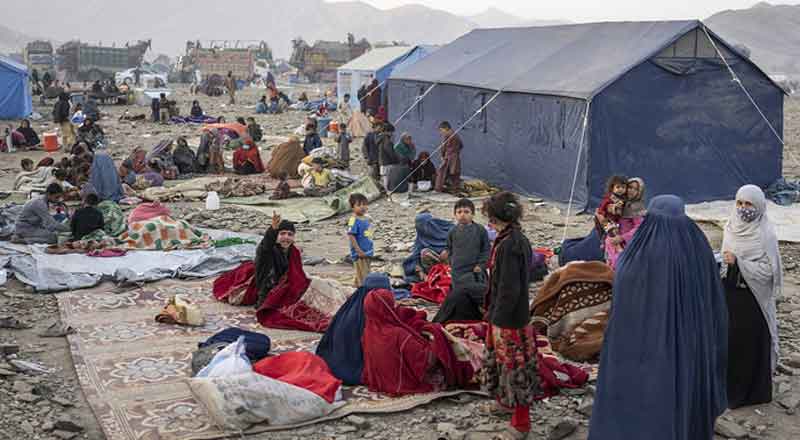- Afghans fleeing Pakistan to avoid arrest and deportation are sleeping in the open, without proper shelter, food, drinking water, and toilets once they cross the border to their homeland.
- Afghans leave Pakistan from two main border crossings, Torkham and Chaman.
- The Taliban have set up camps on the other side for people to stay in while they wait to be moved to their place of origin in Afghanistan.
- Children have no access to basic foods.
- The country director for Save the Children, said many of those returning are coming back without education documents, making it difficult for them to continue their learning.
Afghans fleeing Pakistan to avoid arrest and deportation are sleeping in the open, without proper shelter, food, drinking water, and toilets once they cross the border to their homeland, aid agencies said on Sunday. Hundreds of thousands of Afghans have left Pakistan in recent weeks as authorities pursue foreigners, they say are in the country illegally, going door-to-door to check migrants’ documentation. Pakistan set Oct 31 as a deadline to leave the country or else they’d be arrested as part of a new anti-migrant crackdown.
Afghans leave Pakistan from two main border crossings, Torkham and Chaman. The Taliban have set up camps on the other side for people to stay in while they wait to be moved to their place of origin in Afghanistan.
The Taliban have set up camps on the other side for people to stay in while they wait to be moved to their place of origin in Afghanistan. There is limited access to drinking water, no heating source other than open fires, no lighting, and no toilets.
Aid agencies said Torkham has no proper shelter. There is limited access to drinking water, no heating source other than open fires, no lighting, and no toilets. There is open defecation and poor hygiene. UN agencies and aid groups are setting up facilities with thousands of people entering Afghanistan every day.
Kayal Mohammad lived in the northwest Pakistani city of Peshawar for 17 years. He has five children and was deported to the Afghan border almost a week ago. He told The Press he wasn’t allowed to take any household belongings with him. Everything he and his family own remains in Pakistan. His seven-year-old daughter Hawa weeps because she is cold. She drinks tea for breakfast from a cut-up plastic bottle and sleeps without a blanket.
Her father urged the international community for help. “We cannot ask the Taliban government,” he said. “They have nothing because they are yet to be recognized as a government. There are families who have nothing here, no land, no home. They are just living under the open sky. No one is helping.”
People enter Afghanistan with just the clothes on their backs because their watches, jewellery, and cash were taken at the Pakistani border, she added.
Arshad Malik, country director for Save the Children, said many of those returning are coming back without education documents, making it difficult for them to continue their learning, as well as lacking the local Afghan languages of Dari and Pashto because they studied Urdu and English in Pakistan.
He warned that child labour in Afghanistan as well as their involvement in smuggling are likely to increase due to poverty as most returning families were among the poorest migrants in Pakistan.
The Taliban say they have committees working “around the clock” to help Afghans by distributing food, water, and blankets.
Afghanistan is overwhelmed by challenges, compounded by the isolation of the Taliban-led government by the international community. Years of drought, a beleaguered economy, and the aftermath of decades of war have led to the internal displacement of millions of Afghans. Concerns have risen among the humanitarian community about the impoverished country being unable to support or integrate those currently forced to leave Pakistan.
(With inputs from the agencies)





